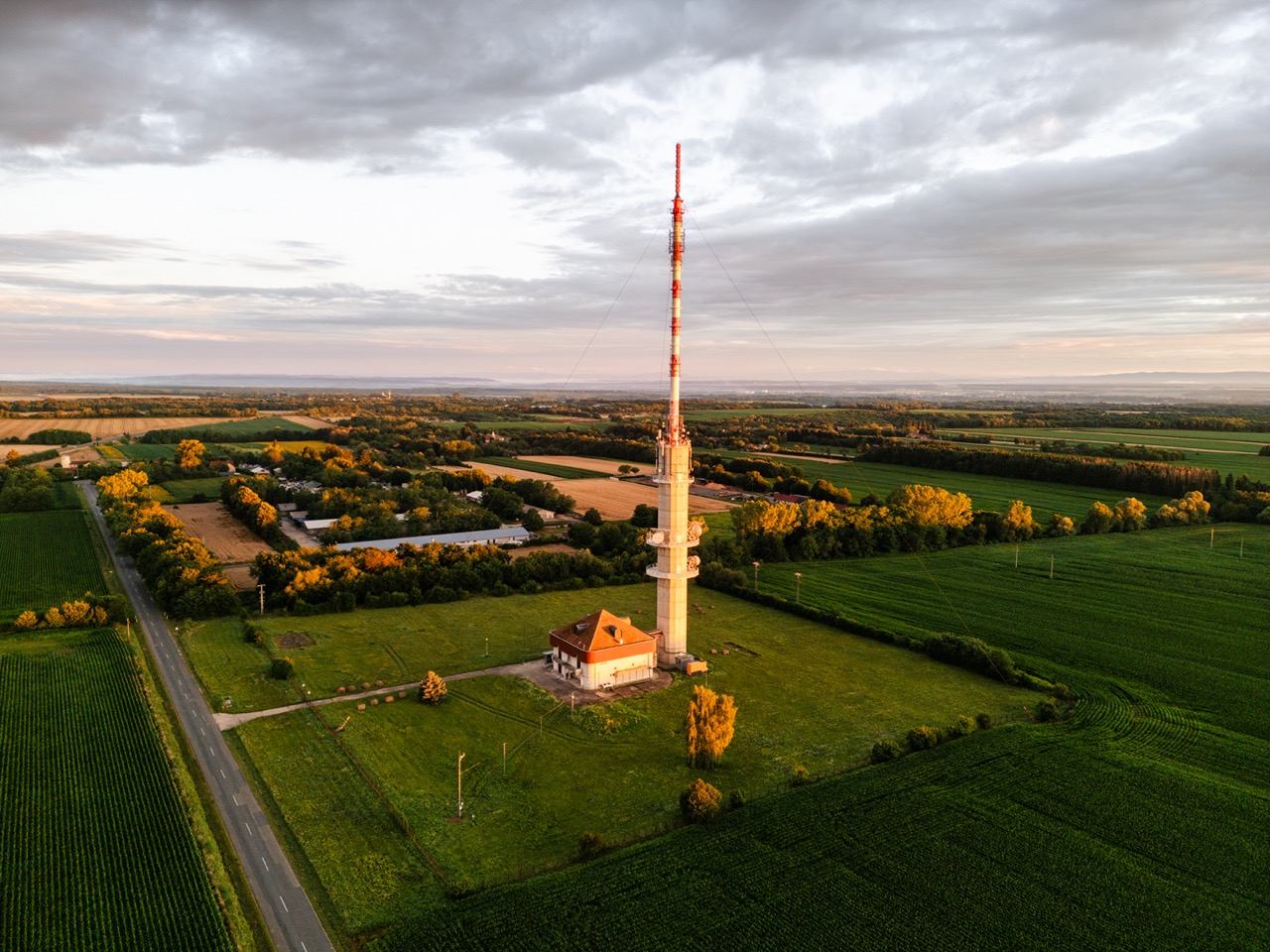
In a quiet corner of western Hungary, the Hegyhátsál Atmosphere Station sits alone among open fields and scattered woodlands, its tower rising high above the trees. Few people visit this secluded site each year, but for nearly three decades, it has been quietly collecting data on greenhouse gases, offering a unique view into Europe’s changing climate.
The Hegyhátsál Atmosphere Station is located in a remote town in western Hungary. In mid-summer, the station’s primary soundscape is filled with the chirping of swallows nesting in the tower’s structure. Built by a telecommunications company Antenna Hungaria in the early 1990’s, the tower reaches up to 135 meters, with the highest monitoring level at 115 meters above the ground.
We are greeted by Dr László Haszpra, the station’s Principal Investigator, responsible for conducting the measurements and processing raw data. Haszpra established the station over 30 years ago, in 1993. For years, scientists worked side by side with the employees of the TV and radio transmitter station, until the TV and radio transmission became largely automated and did not require continuous staff presence. Today, greenhouse gas measurements are similarly automated, and the station is visited less frequently than before, allowing nature and birds to peacefully inhabit the area most of the year.
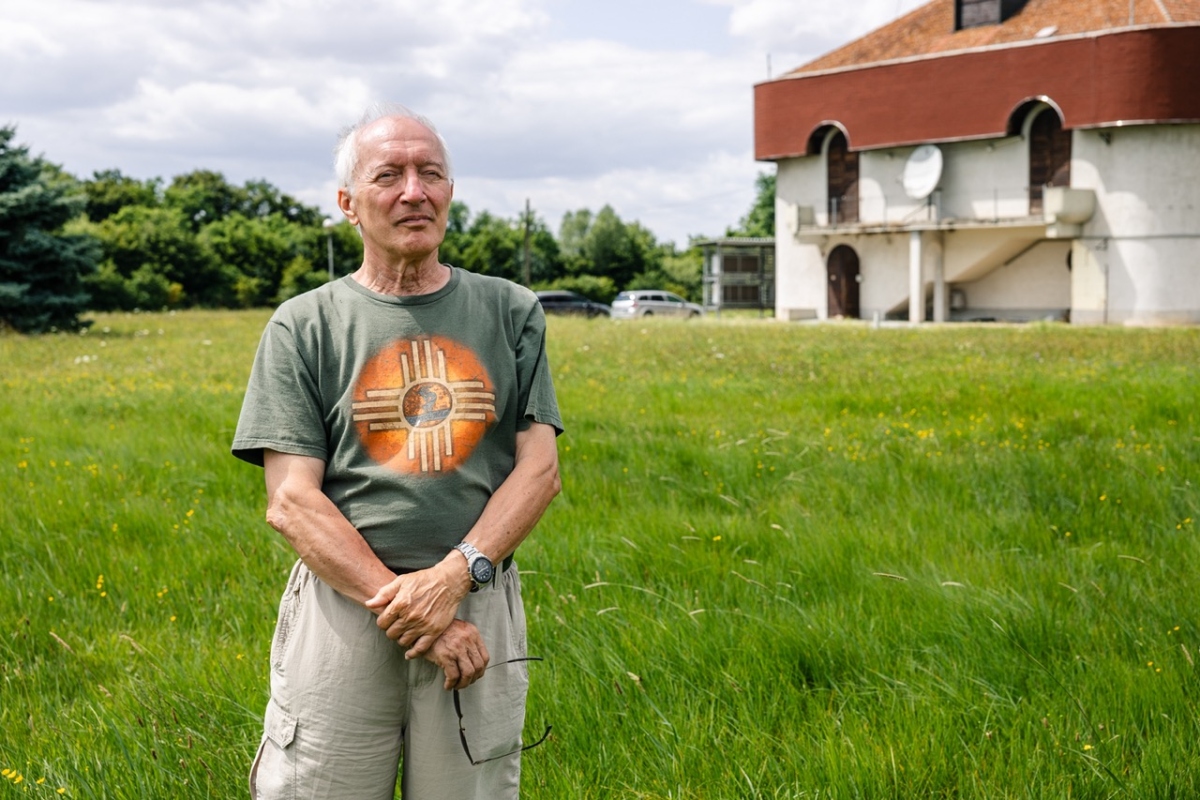
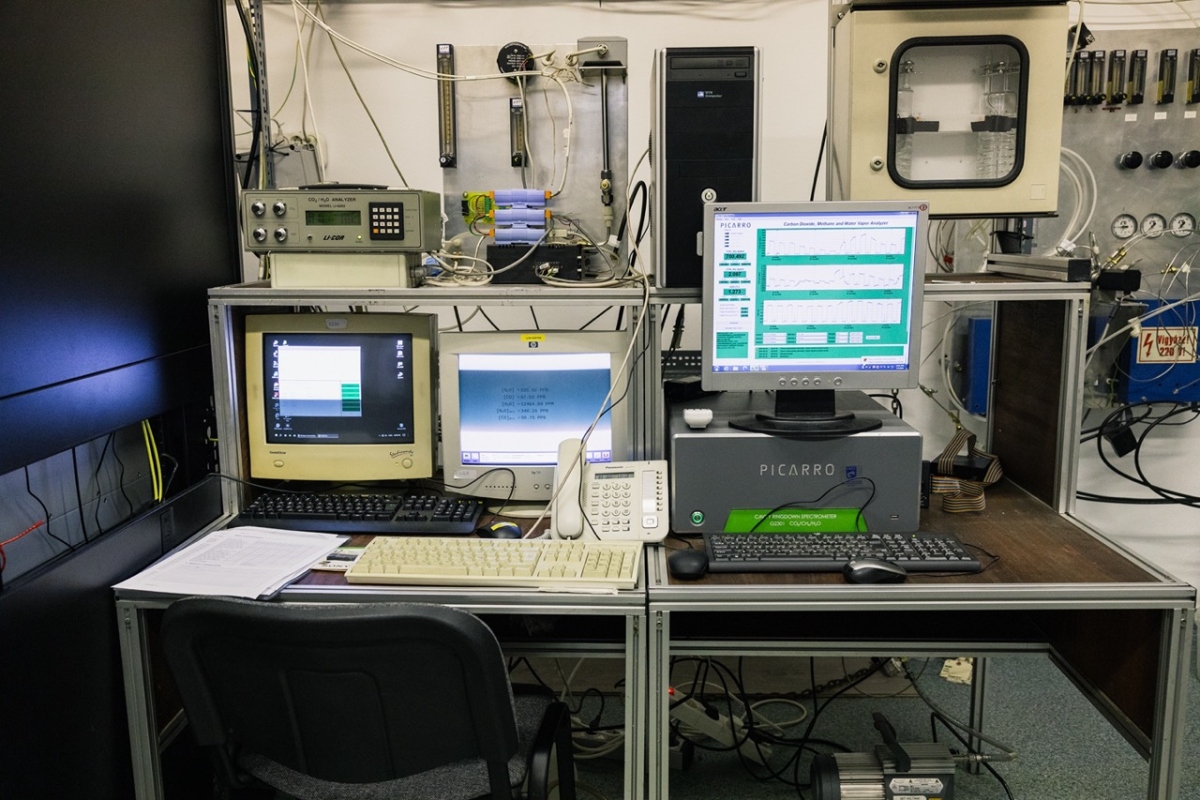
László Haszpra is a respected figure in atmospheric sciences, both in Hungary and across Europe. On his initiative, the country joined ICOS in 2022, making Hegyhátsál the easternmost ICOS station in the temperate zone. The greenhouse gas measurements conducted here are crucial for understanding western and central European emissions.
“The environment is typical of central Europe, with fields and patches of forest,” Haszpra explains. “Geographically, westerly winds are the most common. You can see that the high concentrations typical on summer nights are rising faster than the general trend in atmospheric concentration. This is likely caused by ever-warmer summer nights, which intensify respiration in ecological systems.”
Climate change can be observed here in a more immediate, everyday way.
“Since we began measurements here, we have observed significant climate change—a 1.5°C increase in annual temperature, which is huge. We can see it in the carbon dioxide record and the earlier start of the growing season. We also have fewer and fewer birds in the region because they arrive relatively too late. By the time the offsprings of these migratory birds hatch, the larvae and pupae, which are their main food, have already developed due to the earlier spring.”


New generation of scientists
As the morning turns into afternoon, the calm atmosphere shifts with the arrival of a van full of colleagues. A group of László’s colleagues from Atomki, led by senior scientist Mihály Molnár, steps out, and suddenly László is surrounded by colleagues engaged in a lively, friendly chatter.
In the coming years, the station will undergo a major change, as László plans to retire and pass on his responsibilities to the next generation.
“I am very happy that I met László and that he was very open, 16 years ago, to take me in as a postdoc,” says Mihály Molnár. “We started with radiocarbon sampling and measurements together for over a year. Later, it turned out that my group and I could assist with greenhouse gas measurements as well. We are very proud of this station and of what László has accomplished here. We’ll do our best to continue his work when he retires.”
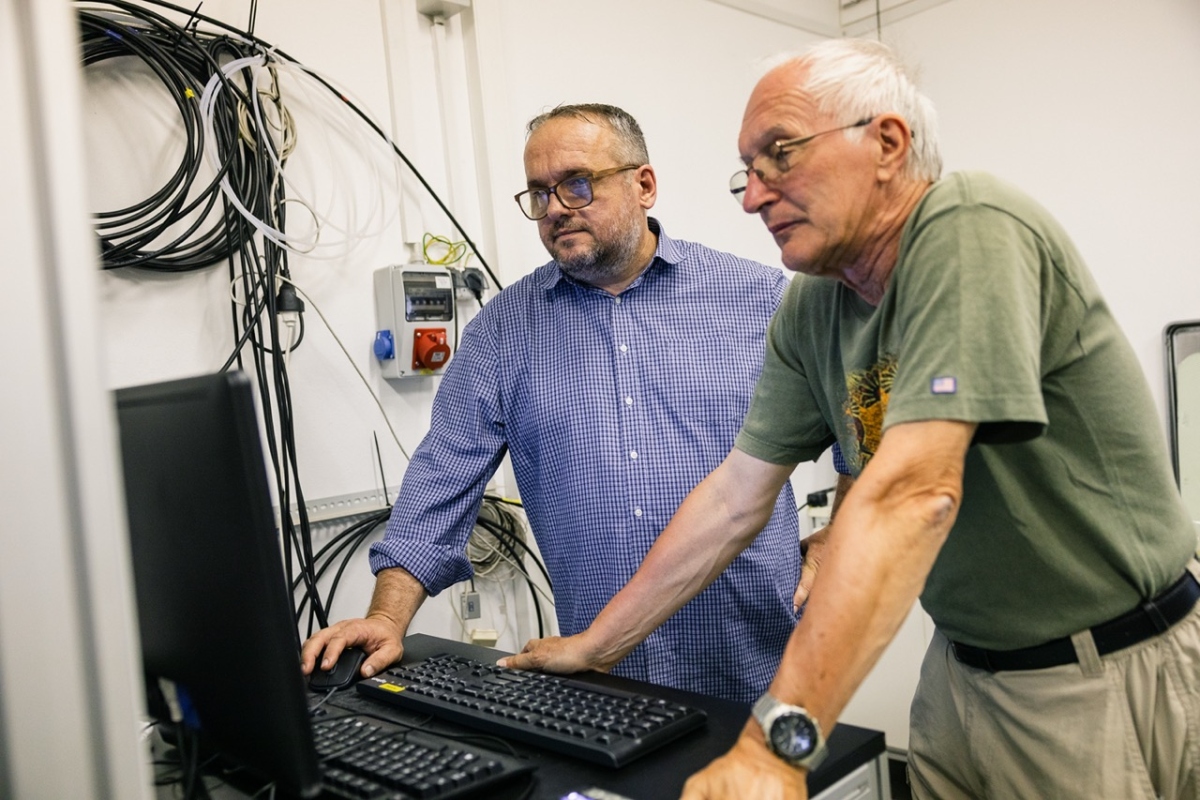
Every month, Mihály and his team make the 1000-kilometre round trip from Debrecen, in eastern Hungary, to take care of maintenance of the ICOS measurement instruments.
“We also have other projects here, like the PARIS – Process Attribution of Regional Emissions project, in which we collaborate with various European partners on greenhouse gas analysis and studying the contribution of fossil sources.”
Understanding the sources of fossil fuel emissions is vital for climate change mitigation. To detect CO2 surpluses, the scientists at Hegyhátsál use radiocarbon measurements, a widely used measurement technique that can be used as a tracer to detect sources of carbon. The main source of emissions observed by the Hegyhátsál tower is Budapest, though this varies with wind direction.
“Hegyhátsál is really important because the measurements help us understand whether emissions are from natural or human sources,” says Balázs Áron Baráth, a PhD student.
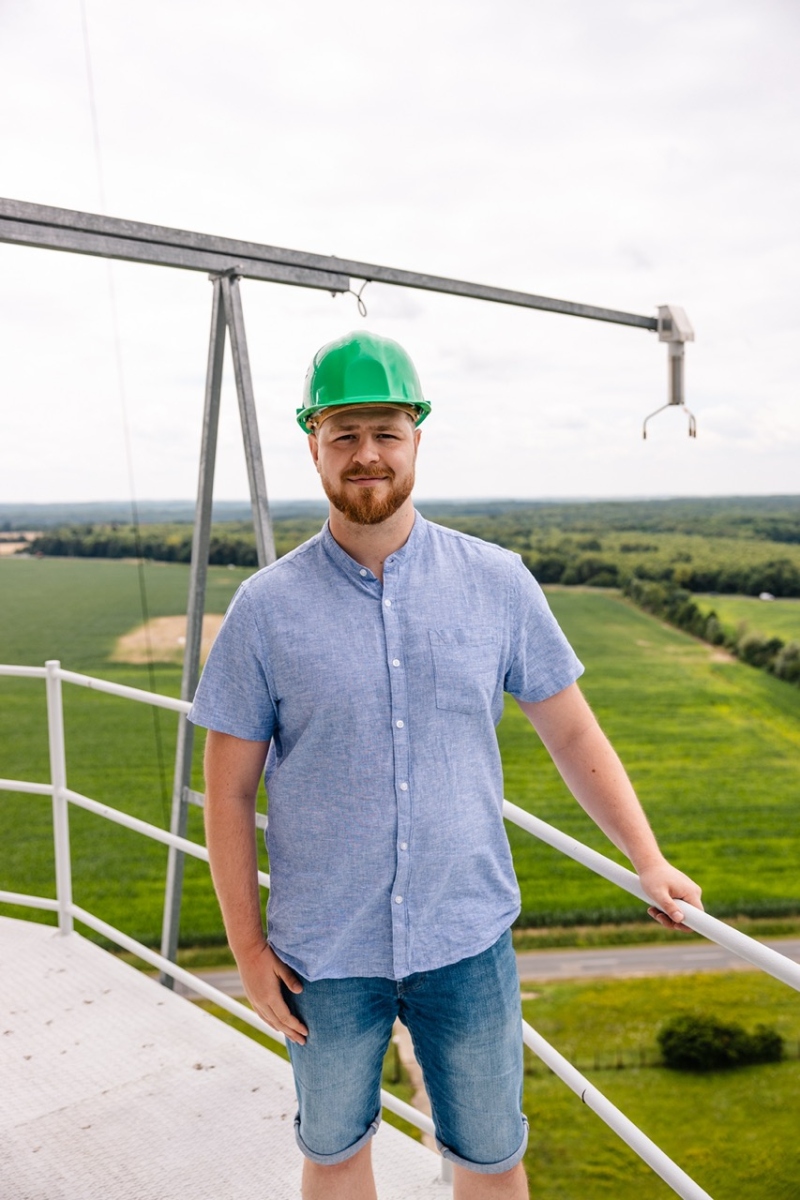
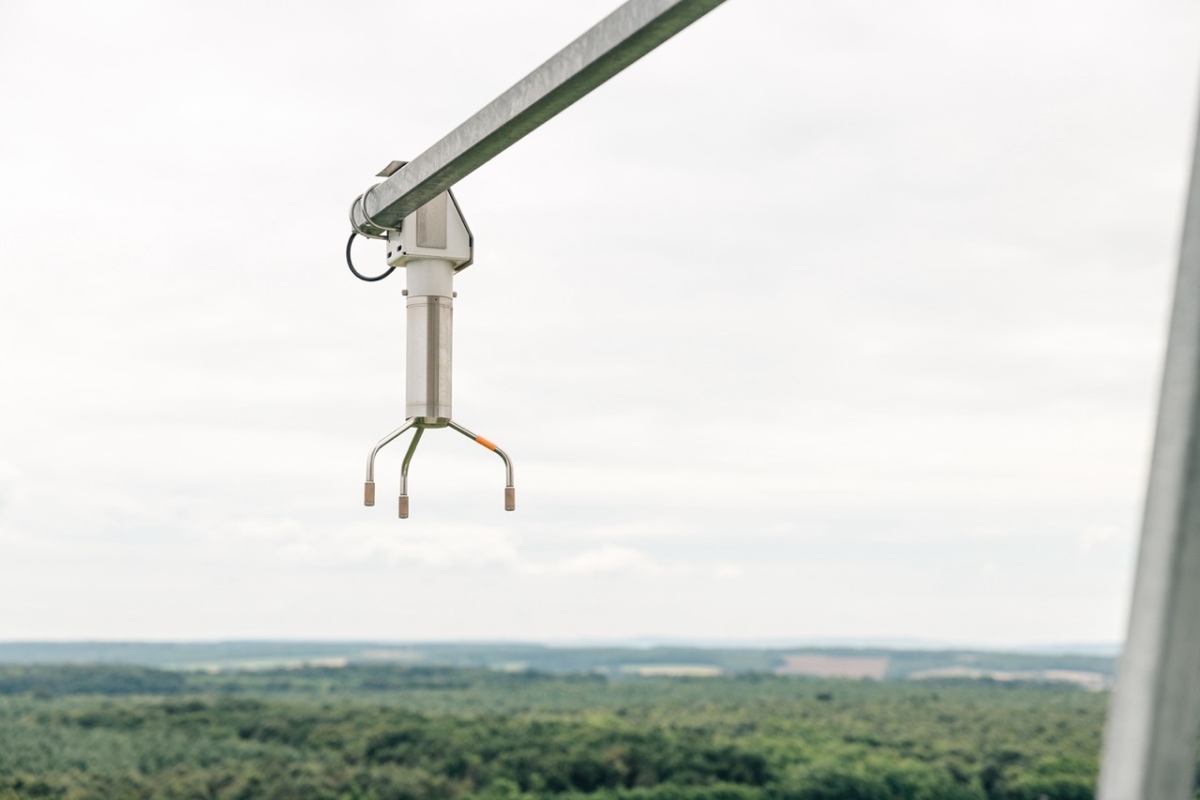
Hegyhátsál measurements support for climate action
Being part of ICOS provides stations like Hegyhátsál with multiple benefits, including guidance, training, and knowledge exchange. ICOS Atmosphere stations, for example, are centrally supplied with reference gases. Having their measurements standardised according to the ICOS standards will give the stations more possibilities to cooperate internationally, get access to funding through EU-funded projects, and share their data with a much wider group of users.
“Joining ICOS has strengthened the scientific capacity in this field,” says László. “It’s very important for national decision-making.”
ICOS observational networks, such as ICOS Hungary, can offer support for governments in their efforts to mitigate climate change as well as hold them accountable for reaching their mitigation targets. This is done by supplying them with direct atmospheric observations that can be used to supplement greenhouse gas inventories, which are the primary way countries estimate their emissions. László Haszpra views direct measurements as vitally important for getting the full picture of the climate.
“The climate of the planet is governed by the amount of greenhouse gases in the atmosphere. It cannot be estimated directly from the anthropogenic estimations that are calculated using statistical data. That’s why we need to measure the atmospheric concentrations. These measurements are essential for getting a clearer picture of the future evolution of climate.”

Photographs by Pekka Pelkonen